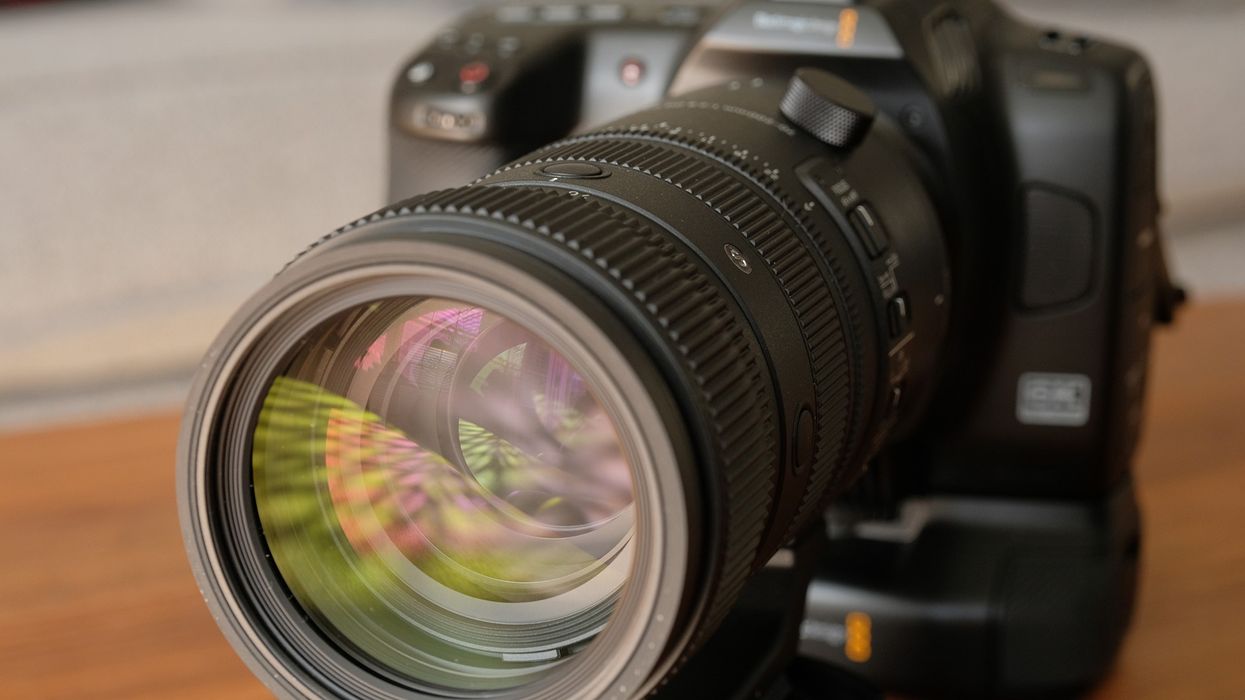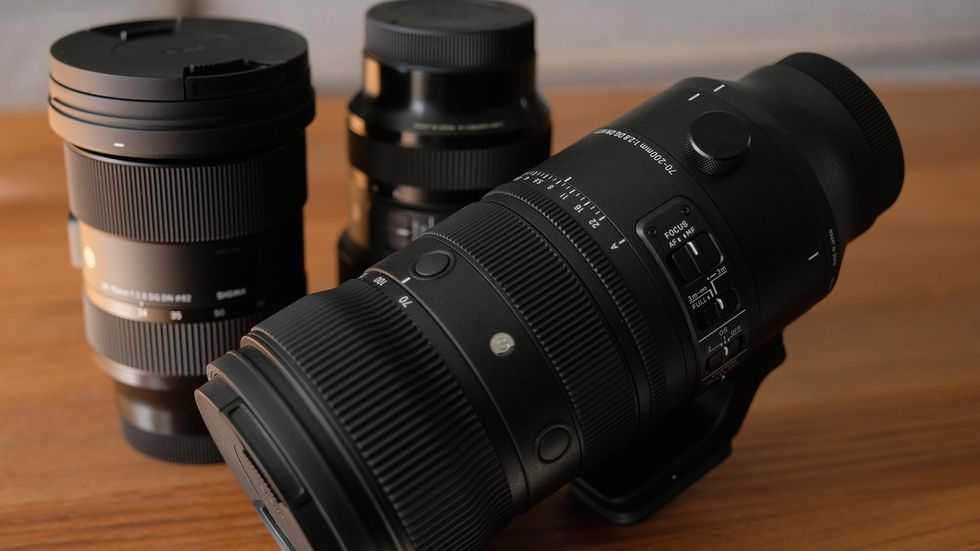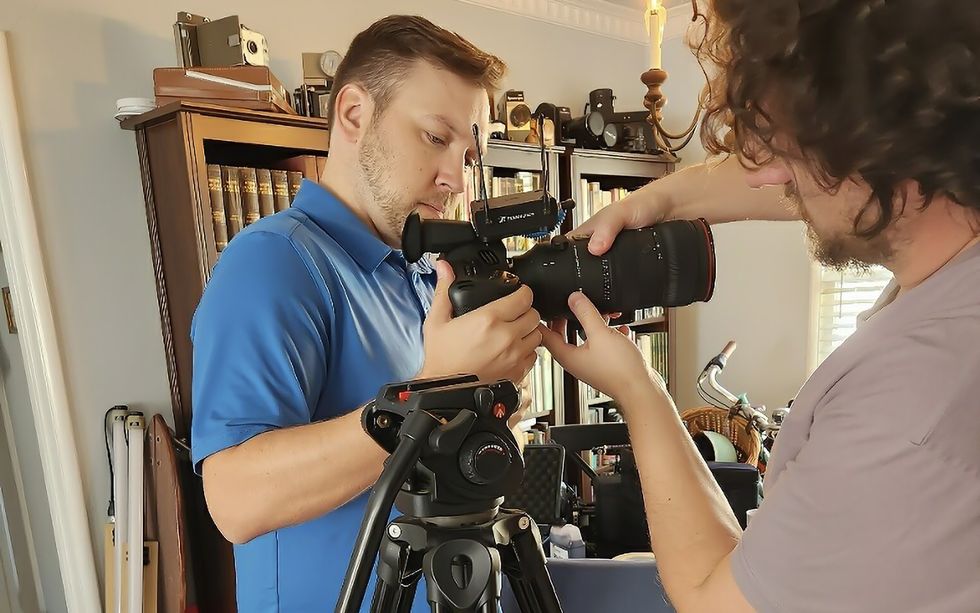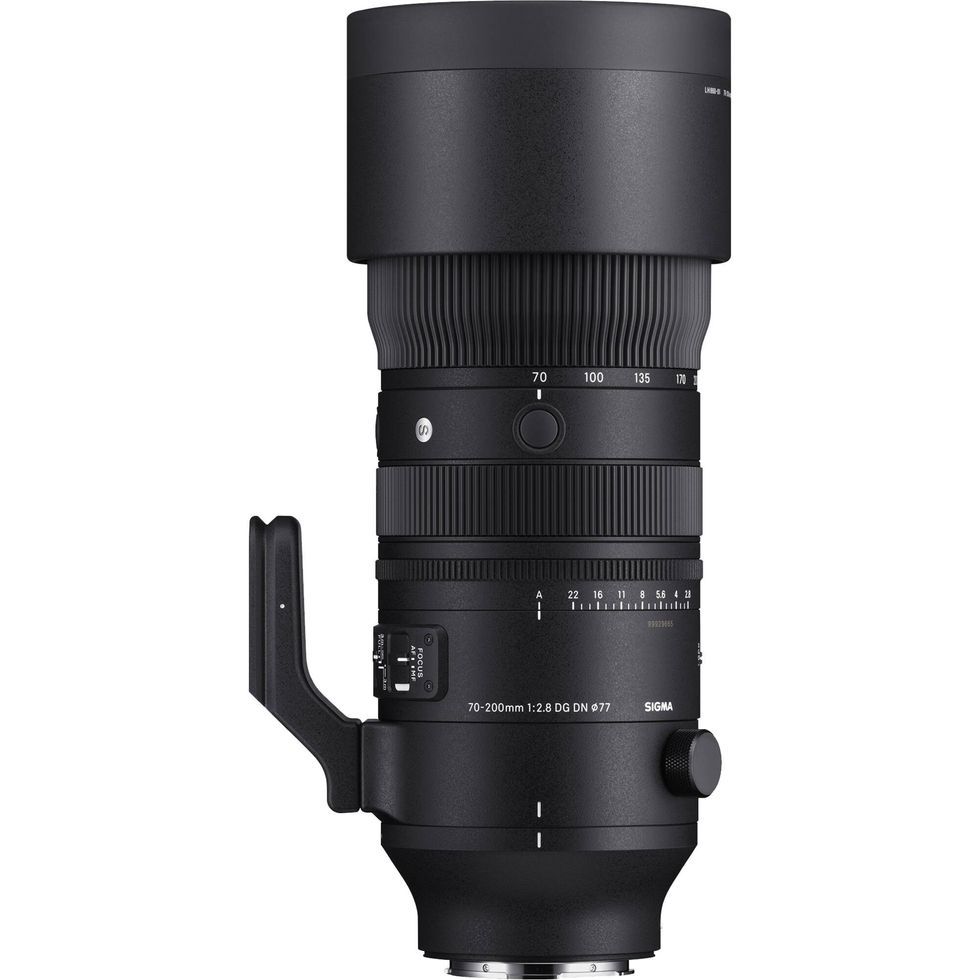SIGMA's New 70-200mm f/2.8 L-Mount Is A Full-Frame Dream
The new SIGMA 70-200mm F2.8 DG DN OS | Sports lens is perfect for photographers. But how does it stack up for narrative film?

As someone who's thrived in the small sensor space, shooting anything on full-frame was is always an adjustment. Even when I transitioned from camcorder to DSRL, I opted for the Canon 7D.
Recently, I shot a short to test the new BMCC 6K full-frame cinema camera and adjusting to the bigger sensor was a unique experience.
Thankfully, Sigma was kind enough to loan me its new 70-200mm F2.8 DG DN OS | Sports lens in L-Mount to test, along with two other lenses.
Here's everything I learned from using this lens and why I think it's a must for any hybrid full-frame shoot working in L- or E-Mount.
An Affordable Reach
The 70-200mm F2.8 DG DN OS | Sports lens is the newest addition to Sigma's L-Mount line. It features a solid max aperture of f/2.8 with special low-dispersion glass. High-speed AF is achieved thanks to a dual High-response Linear Actuator, which uses Sigma's latest OS2 optical stabilization algorithm. This aims to provide 7.5 stops of stabilization at the wide end and 5.5 stops at the telephoto end.
The floating focus design allows for two focus groups to move in opposite directions, reducing the amount of focus lens movement by about half, and while this won't remove focus breathing, the reduction should make it pleasing if not unnoticeable.
Best of all, the zoom mechanism is all internal.

The SIGMA 70-200mm F2.8 DG DN OS | Sports Lens
SIGMA
With E-Mount and L-Mount versions available, it's a solid lens to have in your kit if you run these camera systems. SIGMA's version is also a few hundred dollars cheaper than Sony's offering of the same focal length.
On paper, it's a solid tool to have for photographers and videographers on a budget. Yet, for those in the narrative world, it can also be an attractive proposition to get the reach you need for your full-frame L-Mount cinema camera.
However, you'll have to sacrifice a few luxuries to save those pennies.
Match Made In Full-Frame
If you're shooting narrative projects using a full-frame L-Mount camera like from Panasonic or the new BMCC 6K, finding a good lens that can give you the reach you need is difficult, especially if it's a zoom lens.
Cinema zooms are pricey, and the more affordable ones utilize E-mount to make those tools affordable. With this in mind, creatives tend to lean on photography lenses when trying to save money.
This is where the SIGMA 70-200mm F2.8 DG DN OS | Sports lens comes in handy. While reviewing the BMCC 6K, I shot a quick short film to really push the camera in a low-budget environment.
I paired the camera with the new 70-200mm f/2.8, the 24-70mm f/2.8 DG DN Art, and the 14-24mm f/2.8 DG DN Art.

The SIGMA 70-200mm f/2.8, the 24-70mm f/2.8 DG DN Art, and the 14-24mm f/2.8 DG DN Art.
To really get the most out of the full-frame sensor in the BMCC 6K, my DP and I opted to shoot 3:2 in the full 6K resolution. This was a huge sensor, at least compared to the Super 16 and Super 35 formats I've usually used, and while I used the other two zooms in tight quarters, I found myself using the 70-200mm for most of the shots on this project.
And this is where this new lens really shined for me. The tight compositions I was used to were a breeze to achieve, and because we were using the entire sensor, I could comfortably compose my subjects at f/4 and f/5.6 (and even f/8) while still obtaining a pleasing depth of field.
It rendered images beautifully, and there weren't any noticeable color shifts between the wider lenses in the trio. Focus roll-off was nice, and when we did rack focus, the breathing wasn't noticeable at all.

Still from 'The Rose Garden' shot on the new Sigma 70-200mm f/2.8
Speaking of focus, I come from the cinema world and usually use a follow focus with geared manual lenses. Autofocus isn't something I have in my toolkit, so using the 70-200mm on this project was a unique experience. The crew consisted only of two people, and quickly finding our focus was crucial to making sure we'd make our pages for the day.
The combination of the BMCC 6K and the 70-200mm didn't give us the perfect AF tracking of a Sony system, but it drastically sped up our workflow. One tap of the focus button on the BMCC 6K got us focused on our subject, and for those moments when we needed manual operation, the focus ring was really nice to use.

This was our entire setup for most of the project.
Finally, the optical image stabilization was brilliant. Even at 150mm and 200mm, my DP operated the camera handheld, with only smooth camera sway. There were also two different options for stabilization, one for mimicking a locked-off shot and another that allowed for some movement before stabilization kicked in.
Honestly, for any creative shooting handheld on its own, having optical stabilization is a must, especially at the focal length that the 70-200mm provides. It's something I really wish cinema lenses would employ.
But as with all affordable tools, there are some caveats to consider.
The Sacrifices We Make
The SIGMA 70-200mm F2.8 DG DN OS | Sports lens costs only $1499. For that price, creatives get a great image and amazing stabilization. While we didn't test the AF performance in photo mode, it was a huge asset to our workflow.
However, for narrative work, there are some things to consider with this lens. It's made for photography first and video second. The focus ring is fly-by-wire and didn't keep consistent focus marks when we were racking focus.
Every time we reset, we had to shift our marks a bit. If you need to rely on this lens for repeatable focus marks, it won't be able to deliver.

DP Michael Rotchadl prepping the 70-200mm for a shot.
Secondly, when we watched playback on the BMCC 6K and then returned to recording, the focus would reset to a neutral position. While this is just a byproduct of the lens design and camera/lens communication, it was a hindrance for several locked-off shots as we needed to reset the focus each time. The AF, however, made this a non-issue most of the time.
Finally, it's not a small lens, especially when you compare it to the 24-70mm and 14-24mm that we paired it with. This won't be a deal breaker for most folks, and it wasn't to us, but it's something to consider when building your kit.
Having said all this, we can't really say these are drawbacks. This isn't a lens made for narrative work, but it is a lens that can work in a narrative space if you're willing to roll with the punches.
Is This a Lens For You?
If you're looking for a long L-Mount lens to use with the BMCC 6K, and you can only spend $1499, the 70-200mm F2.8 DG DN OS | Sports lens is an interesting choice to add to your kit.
SIGMA 70-200mm f/2.8 DG DN OS Sports Lens
The Sigma 70-200mm f/2.8 DG DN OS Sports Lens excels at capturing sports, wildlife, and weddings. The large f/2.8 aperture allows impressive performance throughout the entire zoom range and provides reliable low-light performance. Dual HLA (High-response Linear Actuator) motors enable high-speed autofocus, while SIGMA's OS2 algorithm effectively stabilizes images, giving up to 7.5 stops of correction.

It won't be a perfect cinema lens, but it'll expand your capabilities in a way that no other lens can do at the moment. At least for the price. If the quirks of this lens are something you can overcome, it's definitely something to add to your shortlist when looking at new glass.
However, if you're a photographer or hybrid shooter using a Panasonic S1H or you shoot on Sony, the 70-200mm is a must if you want that long reach on a budget.
Whatever your needs are, SIGMA has made a solid telephoto lens that punches well above its price point, and it was fun to use it in a space it naturally doesn't thrive in.
- New Blackmagic URSA 4K Footage is Simply Beautiful ›
- Sigma’s Holy Trinity of Zoom Lenses Set To Be Complete With New 70-200mm F2.8 DG DN ›
- Does The New Sigma 70-200mm f/2.8 Have A Home In Cinema? ›
- Take Super-Telephoto Hand-Held Shots with This New Sigma 500mm ›
- Check Out Sigma’s Slimmed Down 24-70mm F2.8 DG DN II Zoom Lens | No Film School ›
- Shoot Wide Open with Sigma’s World’s First f/1.8 Zoom Lens for Full-Frame Cameras | No Film School ›

 "'Back Home"via Mercedes Arutro
"'Back Home"via Mercedes Arutro 'Back Home'via Mercedes Arutro
'Back Home'via Mercedes Arutro 









